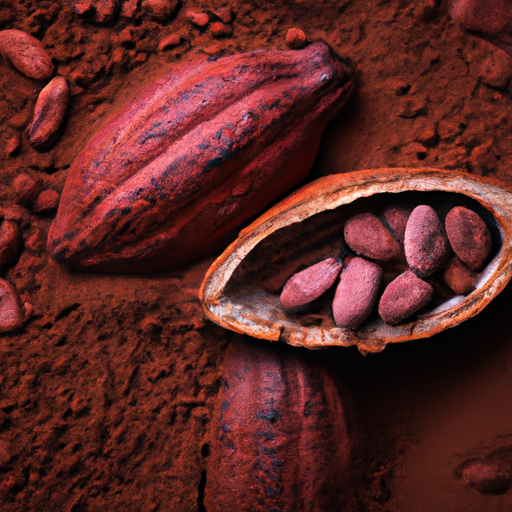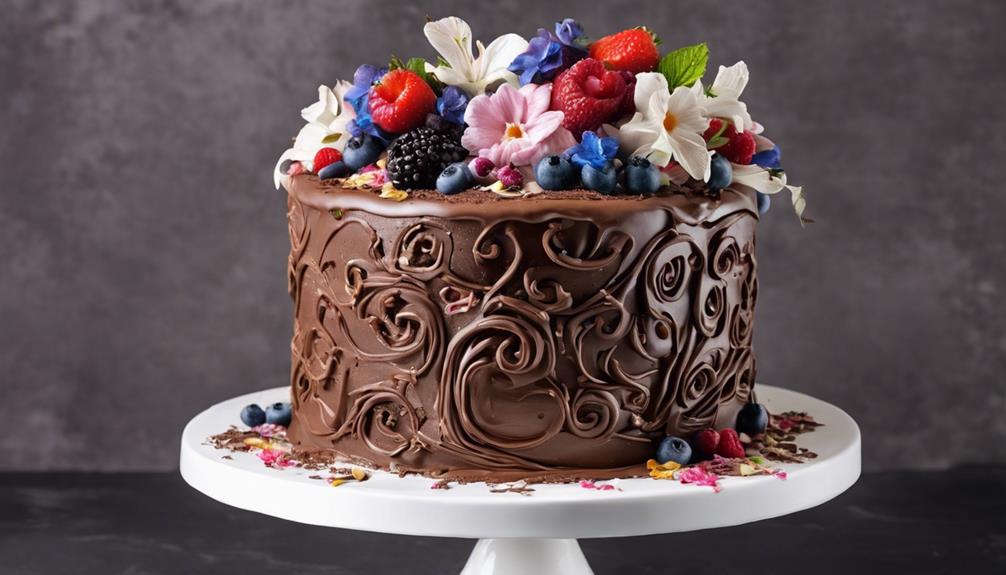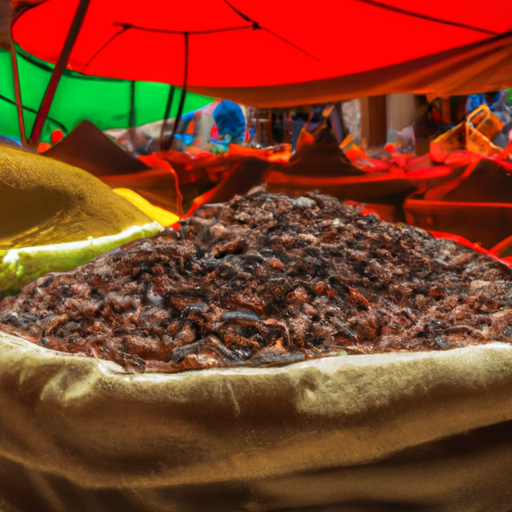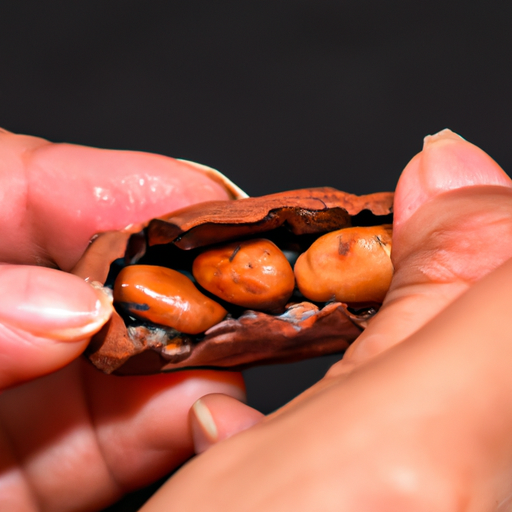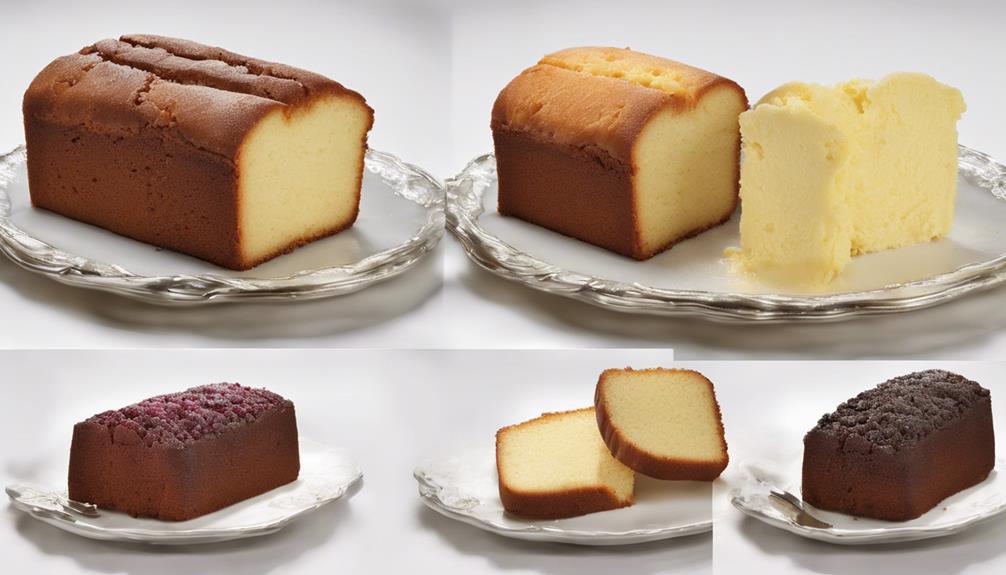Were you aware that raw cacao is not only tasty, but also extremely nutritious? It is actually one of the most antioxidant-rich foods globally, with more antioxidants per gram than blueberries, goji berries, and even green tea.
As a lover of all things chocolate, I was thrilled to discover the wonders of raw cacao and its many health benefits. In this article, we will explore the origins of raw cacao, its nutritional profile, and the various processing methods used to transform it into the chocolate we know and love.
We will also delve into the differences between raw cacao and cocoa, and how to incorporate this superfood into a healthy lifestyle. So join me on this journey as we uncover the power of raw cacao and learn how to embrace its deliciousness for optimal health and well-being.
Key Takeaways
- Raw cacao has variations in flavor that can be enhanced through grinding and refining techniques.
- Raw cacao is packed with antioxidants, specifically flavanols, which are linked to improved heart health and cognitive function.
- Raw cacao is a good source of minerals like magnesium and iron, and also contains caffeine and theobromine.
- Moderation is important when consuming raw cacao due to its high calorie and fat content, and ethical and sustainable sourcing is vital for supporting local farmers and communities.
Origins of Raw Cacao
The origins of raw cacao can be traced back to the ancient civilizations of Central and South America. The cacao tree, scientifically known as Theobroma cacao, was cultivated by the Mayans and Aztecs for thousands of years. These civilizations revered the cacao bean and believed it had divine properties. They used it to make a bitter drink known as ‘xocoatl,’ which was reserved for royalty and religious ceremonies.
The cultivation of cacao involved careful selection, fermentation, and drying of the beans to develop their unique flavors. Today, raw cacao is still sourced from these regions, with countries like Ecuador, Peru, and Ghana being major producers.
Now, let’s delve into the nutritional profile of raw cacao.
Nutritional Profile of Raw Cacao
Indulging in raw cacao can give you a burst of nutrients, with its rich, dark color hiding a treasure trove of vitamins, minerals, and antioxidants. Raw cacao is packed with nutritional benefits, making it a powerhouse of goodness for your body. It is a great source of magnesium, which is essential for energy production and muscle function. Additionally, raw cacao is rich in iron, which helps transport oxygen throughout the body. It also contains a variety of antioxidants, such as flavonoids, which have been linked to numerous health benefits, including reducing inflammation and protecting against heart disease. Here is a table highlighting some of the key nutrients found in raw cacao:
| Nutrient | Amount per 100g | % Daily Value |
|---|---|---|
| Magnesium | 230 mg | 58% |
| Iron | 7.3 mg | 41% |
| Antioxidants | High | – |
These nutritional benefits and antioxidant content of raw cacao contribute to its overall positive impact on health. Moving forward, let’s explore the specific health benefits of raw cacao.
Health Benefits of Raw Cacao
Unleash the power of this dark treasure and discover how it can nourish your body and ignite your health journey. Raw cacao is not only delicious, but it also offers a plethora of health benefits. Here are some of the reasons why you should incorporate raw cacao into your diet:
-
Rich in antioxidants: Raw cacao is packed with antioxidants, which help protect your body against free radicals and oxidative stress.
-
Cardiovascular support: The flavonoids found in raw cacao can promote heart health by improving blood flow and reducing the risk of heart disease.
-
Mood booster: Raw cacao contains compounds that stimulate the production of endorphins, the feel-good hormones, promoting a positive mood.
-
Nutrient-dense: Raw cacao is a good source of essential minerals like iron, magnesium, and zinc, which are important for overall health.
By understanding the health benefits of raw cacao, we can now delve into the various processing methods for this remarkable superfood.
Processing Methods for Raw Cacao
One way to unlock the full potential of this dark treasure is by exploring the different processing methods used for raw cacao. These processing techniques play a crucial role in determining the final quality of the cacao and its health benefits.
One common method is the cold-pressing of raw cacao beans, which involves mechanically separating the cacao solids from the cacao butter at low temperatures. This preserves the valuable nutrients and antioxidants found in raw cacao.
Another method is fermentation, where the cacao beans are left to ferment for several days, allowing natural microorganisms to break down the beans’ sugars and enhance their flavor.
Quality control is essential during these processing methods to ensure that the raw cacao maintains its purity and nutritional value.
Understanding these techniques enables us to appreciate the culinary uses of raw cacao and its potential for enhancing our health and well-being.
Culinary Uses of Raw Cacao
Explore the various ways you can incorporate this decadent ingredient into your culinary creations and discover the rich and complex flavors that it adds to your dishes.
Raw cacao can be used in a multitude of culinary recipes, from desserts like chocolate truffles and brownies to savory dishes like mole sauce and chili. Its intense and bitter taste adds depth to sweet treats, while also providing an earthy undertone to savory dishes.
Not only does raw cacao enhance the flavor of your dishes, but it also provides numerous health benefits. It is packed with antioxidants, which help protect the body against free radicals and reduce inflammation. Raw cacao is also a great source of minerals such as magnesium, iron, and zinc, which are essential for overall well-being.
Transitioning into the subsequent section about ‘raw cacao vs. cocoa’, it is important to understand the distinction between these two terms.
Raw Cacao vs. Cocoa
Raw cacao and cocoa may sound similar, but they’re actually quite different.
When it comes to processing and heat exposure, raw cacao is minimally processed and typically not exposed to high temperatures, while cocoa is processed at higher temperatures.
This difference in processing can affect the flavor and taste of the final product.
Additionally, raw cacao tends to have higher levels of antioxidants and nutrients compared to cocoa, making it a more nutritionally rich option.
Processing and heat exposure differences
Contrary to popular belief, the processing of cacao beans can significantly impact their nutritional properties. Heat exposure, in particular, can reduce antioxidants by up to 60%. This reduction occurs because the delicate nature of these beneficial compounds makes them easily destroyed when exposed to high temperatures.
The quality differences between raw cacao and cocoa can be attributed to the processing methods employed. Here are the key steps in the processing and heat exposure differences:
-
Fermentation: Raw cacao beans undergo a fermentation process that helps develop their unique flavors and enhances the nutritional profile.
-
Roasting: Cocoa beans are typically roasted at high temperatures. This not only alters their taste but also leads to the loss of antioxidants.
-
Grinding: Raw cacao is often ground at lower temperatures. This preserves more of its nutritional value compared to cocoa.
-
Alkalization: Cocoa powder may undergo alkalization, a process that further reduces its antioxidant content.
Understanding these processing and heat exposure differences between raw cacao and cocoa can help us appreciate their flavor and taste variations without compromising their nutritional benefits.
Flavor and taste variations
To truly appreciate the flavor and taste variations, you must understand the impact of processing methods and heat exposure on cocoa beans.
The flavor preferences of raw cacao can vary depending on the processing techniques used. For example, beans that are minimally processed and exposed to low heat tend to retain more of their natural flavors, resulting in a more intense and complex taste. On the other hand, beans that are heavily processed or exposed to high heat may have a milder flavor profile.
Additionally, different cooking techniques can also influence the flavor of raw cacao. Roasting, for instance, can bring out nutty and caramelized notes, while grinding and refining can enhance the smoothness and richness of the chocolate.
Understanding these variations in flavor can help in selecting the right beans and cooking techniques to achieve the desired taste.
Transitioning into the subsequent section about nutritional disparities, it is important to consider not only the flavor but also the health benefits of raw cacao.
Nutritional disparities
When it comes to the nutritional disparities of chocolate, there’s more to consider than just flavor. Raw cacao stands out among other forms of chocolate due to its range of nutritional benefits. Firstly, it is packed with antioxidants, specifically flavanols, which have been linked to various health benefits such as improved heart health and cognitive function.
Additionally, raw cacao is a good source of minerals like magnesium and iron, which are essential for proper bodily functions. However, it’s important to note that raw cacao also has potential drawbacks. It contains caffeine and theobromine, which can affect individuals sensitive to these substances. Moreover, raw cacao can be high in calories and fat, so moderation is key.
Transitioning to the subsequent section about ethical and sustainable sourcing of raw cacao, it is vital to ensure that the nutritional benefits of this superfood are obtained in an environmentally and socially responsible manner.
Ethical and Sustainable Sourcing of Raw Cacao
When it comes to sourcing raw cacao, it’s important to consider ethical and sustainable practices. Fair trade certifications ensure that farmers are paid fair wages and work in safe conditions.
Environmental impact considerations involve sourcing methods that minimize harm to the environment, such as organic farming practices.
Additionally, supporting local farmers and communities helps to create economic stability and promote social development.
Fair trade certifications
Fair trade certifications ensure that the production of raw cacao aligns with ethical standards. These certifications are crucial in promoting ethical sourcing and fair trade practices in the cacao industry. Here are four key benefits of fair trade certifications:
-
Improved livelihoods: Fair trade certifications guarantee that cacao farmers receive fair prices for their products, enabling them to improve their living conditions and invest in their communities.
-
Environmental stewardship: Fair trade practices encourage sustainable farming methods that minimize environmental impact, such as organic farming and reforestation efforts.
-
Ethical labor practices: Fair trade certifications prohibit child labor and promote safe working conditions, ensuring that the rights of workers are protected.
-
Community development: Fair trade premiums are often used for community development projects, such as education, healthcare, and infrastructure improvements.
Considering the positive impact of fair trade certifications on ethical sourcing and fair trade practices, it is crucial to also address the environmental impact considerations in the production of raw cacao.
Environmental impact considerations
By taking into account the ecological consequences, the cultivation of cacao has the potential to either nurture or harm our planet. It is crucial to consider the environmental preservation aspect when it comes to raw cacao production. One of the key considerations is reducing the carbon footprint associated with cacao farming. This can be achieved through sustainable farming practices, such as agroforestry systems that promote biodiversity and sequester carbon dioxide. Additionally, minimizing the use of synthetic fertilizers and pesticides can further reduce environmental impact. To illustrate the importance of these practices, I have provided a table below that compares the environmental impact of conventional cacao farming versus sustainable cacao farming.
| Environmental Impact | Conventional Cacao Farming | Sustainable Cacao Farming |
|---|---|---|
| Carbon Footprint | High | Low |
| Biodiversity Loss | High | Low |
| Deforestation | High | Low |
Considering these environmental factors not only ensures the long-term sustainability of cacao farming but also contributes to the preservation of local ecosystems. Supporting local farmers and communities is another crucial aspect of responsible cacao cultivation, which I will discuss in the next section.
Supporting local farmers and communities
To truly make a difference in the world, it’s essential for you to actively support and uplift local farmers and communities involved in the cultivation of this rich and indulgent treat.
By supporting local economies and empowering small-scale farmers, we can contribute to sustainable and ethical practices in the production of raw cacao. Buying raw cacao directly from local farmers ensures that they receive fair prices for their labor and are able to invest in their communities, improving their quality of life.
Additionally, supporting local farmers helps to preserve traditional farming methods and protects biodiversity.
By incorporating raw cacao into a healthy lifestyle, we can enjoy its numerous health benefits while also supporting the livelihoods of those who work tirelessly to bring this incredible ingredient to our tables.
Incorporating Raw Cacao into a Healthy Lifestyle
When incorporating raw cacao into a healthy lifestyle, it’s vital to find creative ways to enjoy its numerous benefits.
One popular way is by incorporating raw cacao into smoothies. Adding a spoonful of raw cacao powder to your favorite smoothie recipe not only enhances the flavor but also provides a rich source of antioxidants and minerals.
Another way to incorporate raw cacao is in baking recipes. From cookies to cakes, raw cacao can add a deep, chocolatey flavor without the guilt.
It’s important to note that raw cacao is different from processed cocoa powder, as it retains more of its natural nutrients. So, when choosing raw cacao, opt for organic and fair trade options to support local farmers and communities.
In conclusion, embracing the power of raw cacao can be a delicious and nutritious addition to a healthy lifestyle.
Conclusion: Embracing the Power of Raw Cacao
In conclusion, incorporating raw cacao into your diet can be a delicious and nutritious way to boost your antioxidant intake and support local farmers.
By embracing the benefits of raw cacao, you can enjoy the flavors while reaping the rewards of its powerful properties. Raw cacao is packed with antioxidants, which help to combat free radicals in the body and protect against oxidative stress. These antioxidants also have anti-inflammatory effects, promoting overall health and wellness.
Additionally, raw cacao contains minerals such as magnesium and iron, which are essential for various bodily functions.
Whether you enjoy raw cacao in the form of a smoothie, a healthy dessert, or as a garnish on your morning oatmeal, you can savor the rich, chocolatey taste while nourishing your body with its numerous health benefits.
Frequently Asked Questions
Can raw cacao be used as a substitute for cocoa powder in baking recipes?
Yes, raw cacao can be used as a substitute for cocoa powder in baking recipes. Not only does it provide a rich and intense flavor, but it also offers numerous health benefits, making it a great choice for health-conscious bakers.
Is raw cacao safe for consumption by children and pregnant women?
Raw cacao is generally safe for consumption by pregnant women and children in moderate amounts. However, it is important to note that excessive intake may lead to caffeine and theobromine overexposure. Raw cacao is rich in antioxidants and may offer potential health benefits.
Are there any potential side effects or risks associated with consuming raw cacao?
Yes, consuming raw cacao may lead to undesirable effects such as increased heart rate and sleep disturbances. However, it’s ironic that these risks come with potential health benefits like improved mood and cognition. The recommended daily consumption is moderate.
How does the taste of raw cacao differ from regular chocolate?
Raw cacao taste differs from regular chocolate due to its rich, intense flavor with hints of bitterness. In addition to its unique taste, raw cacao offers numerous health benefits such as being rich in antioxidants and minerals.
Are there any specific storage requirements for raw cacao to maintain its freshness and quality?
To maintain the freshness and quality of raw cacao, it is important to store it properly. This includes keeping it in a cool, dry place and away from direct sunlight or heat sources. Proper storage helps preserve its taste and nutritional properties.
Does Heating Raw Cacao Affect Its Nutritional Benefits?
Heating raw cacao can impact its nutritional benefits. When raw cacao is exposed to heat, some of its natural enzymes and antioxidants may be destroyed, reducing its potential health benefits. It’s best to consume raw cacao in its natural, unheated form to maximize its nutritional value.
Conclusion
What is raw cacao?
Raw cacao, also known as raw chocolate, is the purest form of chocolate that comes from the cacao bean. Unlike processed chocolate, raw cacao is made by cold-pressing unroasted cacao beans, which helps to retain its natural enzymes and nutrients. This means that raw cacao is minimally processed and does not undergo the same heating and refining processes as regular chocolate.
Why is raw cacao considered a superfood?
Raw cacao is considered a superfood because of its impressive nutritional profile. It is rich in antioxidants, which help to protect the body from free radicals and oxidative stress. Additionally, raw cacao is a great source of minerals such as magnesium, iron, and zinc, which are essential for various bodily functions. It also contains phytochemicals, such as flavonoids, which have been linked to numerous health benefits.
How can raw cacao benefit your health?
Consuming raw cacao can have a positive impact on your health in several ways. Firstly, its high antioxidant content can support cardiovascular health by reducing inflammation and improving blood flow. Secondly, raw cacao has been shown to improve mood and promote feelings of happiness and well-being. This is due to the presence of certain compounds, such as theobromine and phenylethylamine, which can stimulate the release of endorphins and serotonin in the brain. Lastly, raw cacao has been found to enhance cognitive function and improve focus and concentration.
How can you incorporate raw cacao into your diet?
Raw cacao can be easily incorporated into your diet in various ways. You can use raw cacao powder in smoothies, desserts, and homemade energy bars. You can also enjoy raw cacao nibs as a topping for yogurt, oatmeal, or fruit. Additionally, you can make your own healthy chocolate treats using raw cacao butter and sweeteners like coconut sugar or maple syrup. The possibilities are endless when it comes to adding raw cacao to your culinary creations.

